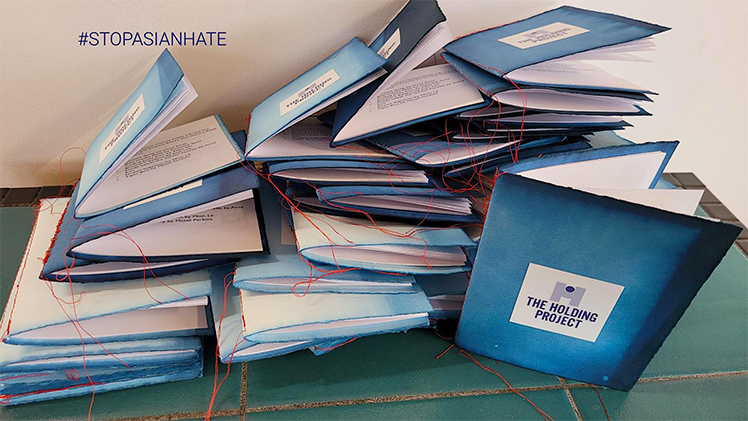An interactive art exhibit curated by an art faculty member at The University of Toledo will be on display in Carlson Library through April 29 to facilitate community participation.
Barbara Miner, professor and chair of the Department of Art, along with community artist/author Lee Fearnside and Dr. Ashley Pryor Geiger, associate professor of humanities, helped develop the collaborative, interdisciplinary artwork that combines art, writing and social justice.

Barbara Miner, professor and chair of the Department of Art, developed “The Holding Project” with community artist/author Lee Fearnside and Dr. Ashley Pryor Geiger, associate professor of humanities.
The exhibit, titled “The Holding Project,” was created in response to the rise of anti-Asian American and Pacific Islander violence and a sense that art could provide a space for community dialogue about feelings of safety and unsafety, and how these feelings about community shape and impact the lives of individuals.
“The Holding Project” is a large-scale concertina book composed of pages containing messages from people from all walks of life. Cards provided near the book ask each responder, “What makes you feel safe?” and “What makes you feel unsafe?”.
“The anonymous responses are not generic, but often deeply personal and tell the unvarnished, uncurated story of a community,” Miner said. “Some express outrage, fear and hatred. But most speak of love, family and respect for others.”
Initially, the exhibit was displayed at all 20 branches of the Toledo Lucas County Public Library where responses were collected. The curated book also was displayed at the Toledo Museum of Art Library in the UToledo Center for the Visual Arts, as well as the downtown arts celebration, Momentum, in September.
Miner said the project will continue to grow and share responses, continuing the dialogue that the project has begun. Smaller versions of the book will be presented to the library locations which generated responses. Eventually, the project will migrate into the digital space to make it available to an even larger, more diverse audience.